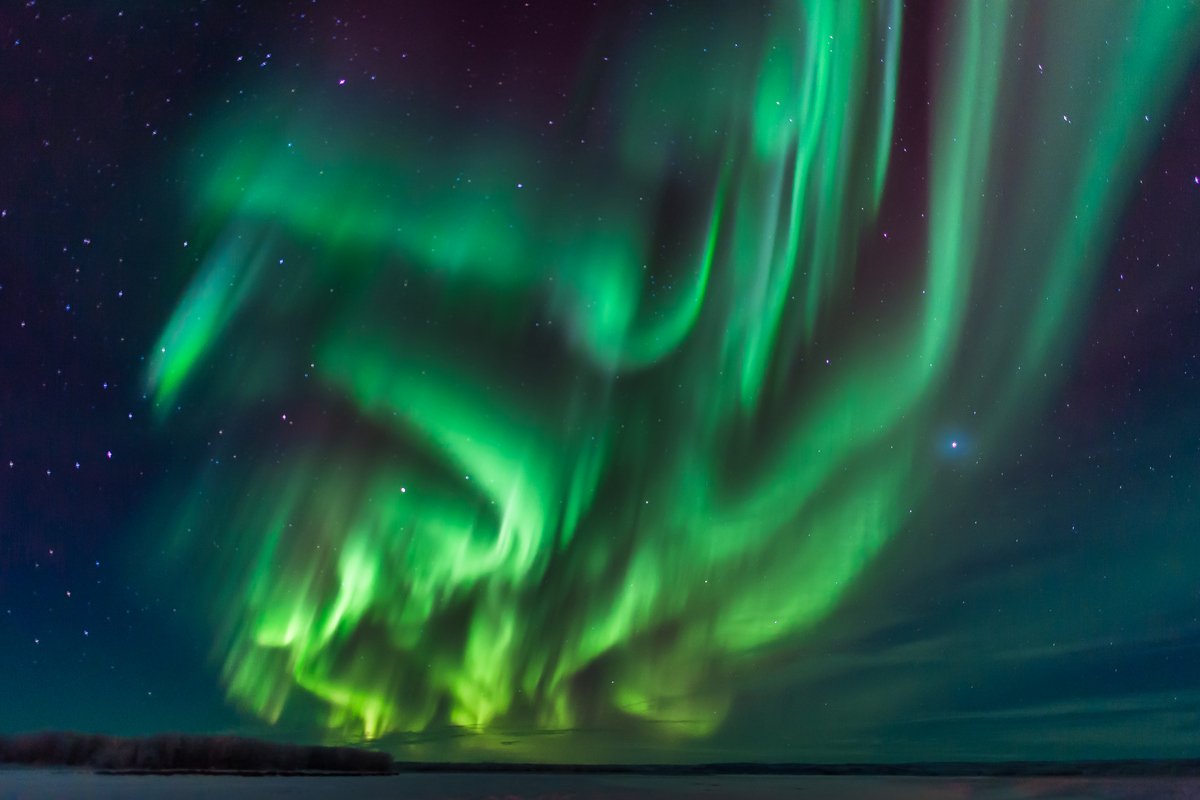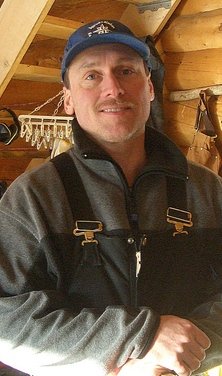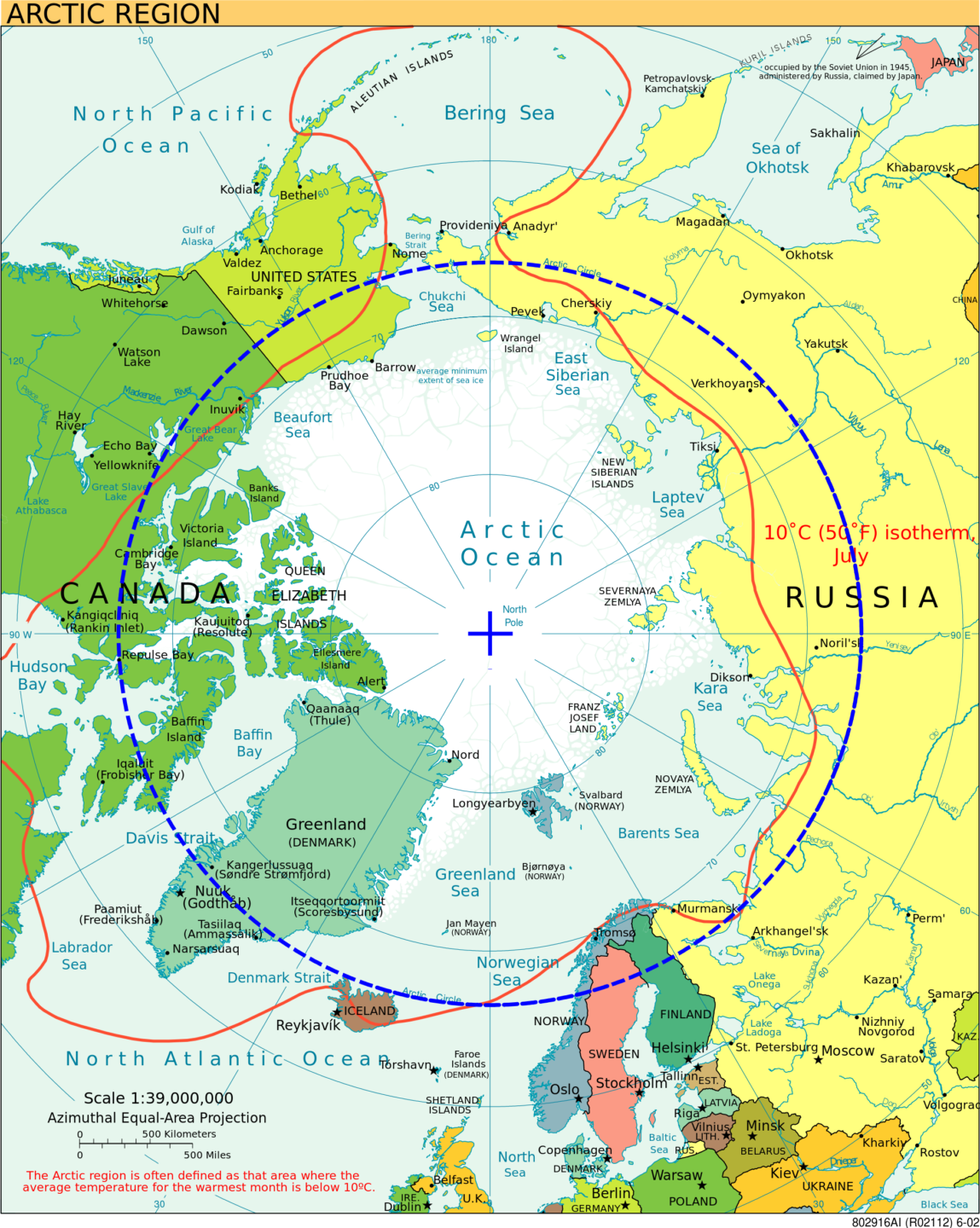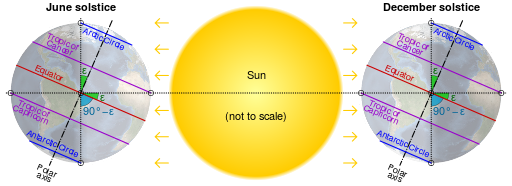Location History Climate Animals Plants People
Northern Lights and the Midnight Sun
The words Arctic Circle may scare some, especially those who aren’t fond of the cold. However, the Arctic has a lot more going on than just a frigid, barren landscape. Don’t confuse it with its (literal) polar opposite, the Antarctic. The Arctic is surrounded by ocean and masses of land, whereas the Antarctic is surrounded by nothing but stormy seas and ice (and penguins!). The Arctic is teeming with life – human, plant and animal (well, a few humans, anyway). The Arctic also experiences a summer and is not continuously shrouded in ice and snow. The Arctic Circle consists of some amazing and beautiful surprises.
LOCATION
The most northerly of the five major circles of latitude spans roughly 7,700,000 square miles, about 4% of the Earth’s surface. The Arctic Circle passes through Northern America, Greenland, North Asia, the Scandinavian Peninsula, and the Arctic Ocean. Norway, Sweden, Finland, Russia, the United States (Alaska), Canada, Denmark (Greenland), and Iceland are the 8 countries containing land in the Arctic Circle. The Arctic Circle’s latitude depends on the Earth’s axial tilt, which means it’s position is not fixed. The Earth’s axial tilt fluctuates within 2 degrees over a 40,000 year period. This fluctuation is present because of tidal forces resulting from the orbit of the moon. As a result, the Arctic Circle is slowly drifting northwards at about 49ft (15m) every year.
Arctic Circle from Fairbanks, Alaska
HISTORY
The Arctic has severe climate conditions, but that hasn’t stopped humans from inhabiting the area.
– 10,000 years ago: Humans began developing arctic land, being the first natives of the region. From then until the 15th century, this northern nation was mostly made up of hunters and gatherers with no centralization or hierarchy.
-15th Century: First wave of European colonization began. Norway, Finland, Sweden, Denmark, and Russia started moving towards the north.
-16th Century: European expansion begins in the Americas. Gold and riches lured the British and French to explore. European traders exported furs to Europe.
-1867: Russian empire sells Alaska to America
-Present: The Arctic Circle is home to about 4 million people along with various polar stations and meteorological centers, large and modern cities, large industrial enterprises, and sea and land transport routes.
CLIMATE
Long, cold winters and short, cool summers are characteristics of the Arctic climate. Sea ice, glacial ice, or snow covers some parts if the Arctic year round, and almost all of the Arctic experiences long periods of the year with some form of surface ice. Winter temperatures can drop below -58° F (-50° C) ,and summer temperatures can occasionally exceed 86° F (30° C). Now, the Arctic is marked as the climatic laboratory for the rest of the planet.
ANIMALS
The Arctic Circle is where polar bears, Arctic foxes, wolves and reindeer can be found, as well as various species of birds such as snowy owls, bald eagles and those ever-so-charming puffins (no penguins!). The Arctic Ocean provides a home for various types of whales, seals, walruses, fish and plankton.
PLANTS
Although the Arctic is sometimes thought of as a place devoid of life, over 20,000 species of plants, animals, fungi, and microorganisms make the Arctic home. Vegetation includes grasses, sedges, polar poppies, willow shrubs, dwarf birch, lichens, liverworts, and mosses. In some places like the Chukotka Peninsula and Wrangle Island, 40 species of plants and animals aren’t found anywhere else on the planet.
PEOPLE
The native people who inhabit the Arctic vary throughout the countries included in the Arctic Circle. There are members of the Athabaskan language family who live in Alaska and Canada, the Inuit and Inupiat. The Russian North includes the Komi, the Sakha and the Karelians. A group called the Saami live in the north of Norway, Sweden, Finland and Russia. These people still rely upon and utilize the land and sea for food and for clothing. Barrow is the most populated and northernmost city of Alaska with a population of around 4,500.
NORTHERN LIGHTS AND THE MIDNIGHT SUN
Due to the position of the Arctic Circle on the planet, summer is a time of abundant light; and on the night of the northern summer solstice, part of the sun may be seen above the horizon at midnight! Darkness is a treat in the Arctic, as well. As the sun starts setting again and the nights grow dark, depending on solar activity, the Northern Lights or Aurora Borealis may light up the sky with breathtaking movement of color.

ARTIC CIRCLE QUICK FACTS
What is the Arctic Circle?
An imaginary line encircling the earth, This line is located at latitude 66 33′ North. In the Arctic Circle, the sun does not set on summer solstice (June 20 or 21) and is does not rise on winter solstice (December 21 or 22). The father north you travel, there are more days with 24-hour sunlight during the summer months or 24-hour darkness in the winter months. At the North Pole, the sun does not set for 180 days.
“Arctic” comes from the work “arktikos”, the Greek word for bear. The reason is that Ursa Major, the Great Bear constellation is viewed in the northern sky.
The Arctic Circle marks the region above which, for at least 1 day a year, there is all day sunshine in the summer and 24-hours of darkness in the winter.
The lowest temperature recorded in the Arctic is -68C (-90.4F) in Siberia
Antarctica is colder than the Arctic. The lowest recorded temperature was -89.2C (128.6F).
The Arctic Ocean covers 5.4 million square miles, which is more than the area of Europe.
The line of the Arctic Circle is about 1,650 miles south of the North Pole.
Grey whales migrate 12,500 from the Arctic to Mexico and back every year.
Eight countries extend into the Arctic: Greenland, Iceland, Norway, Sweden, Finland, Russia, Canada and the USA (Alaska).
Mainland Iceland is actually below the Arctic but the Icelandic island of Grimsey lies exactly on the Arctic Circle.
If all of the ice in the Arctic melted, the global sea level would rise about 24 feet. If all of the ice in Antarctica melted, sea levels would rise about 200 feet.
ABOUT THE PAGE AUTHOR
Ralf Dobrovolny, was born in Heidelberg, Germany. He spent his early adulthood as an industrial salesman. He achieved a childhood dream as a 23 year old when he traveled through the remote areas of Canada’s Northwest Territories. It was a solitary experience as he did not see another soul for over two months.
The experience lead him to lead guided trips for others in the following years with an emphasis on survival in the wilderness and the lands around the Arctic Circle. In 1996 he came to Alaska to settle and in 2003 opened the 1st Alaska Outdoor School. This wild and imposing land has become my home. But to live and travel through the wilderness of this northern land demands unique knowledge and skill sets that we have specialized in.
1st Alaska Outdoor School gave those interested in remote living the chance to experience Alaska’s great gifts in a safe and enjoyable surrounding. Over the years the market demand changed and more and more sightseeing guests visited Alaska. 1st ALASKA TOURS is catering to this Alaska sightseeing tours market with many exciting tours as a division of 1st Alaska Outdoor School.

Ralf Dobrovolny
LINKS TO MORE INFORMATION
Arctic Now:
News from media organizations in Alaska, Norway, Greenland, Iceland, Nunavut


